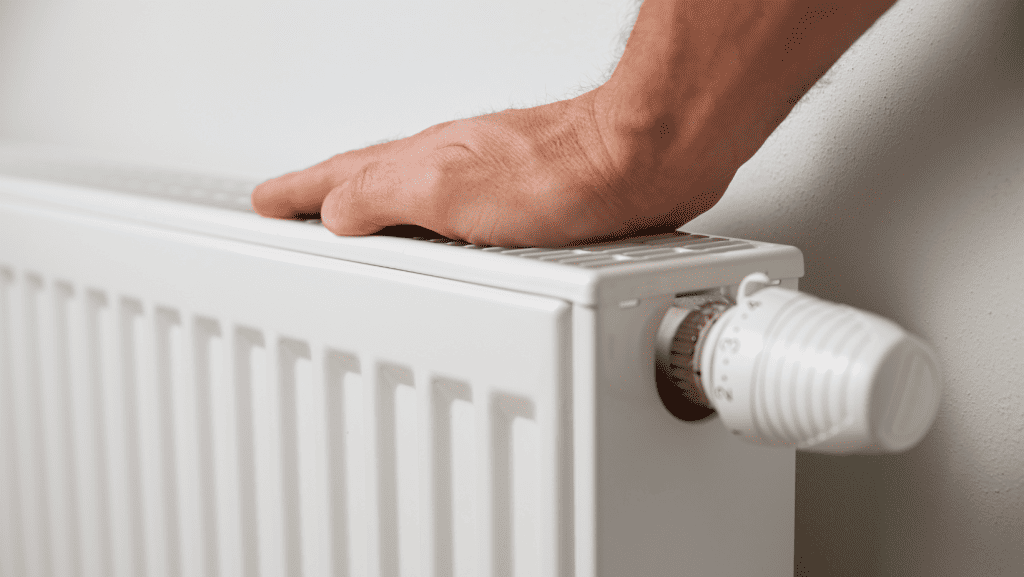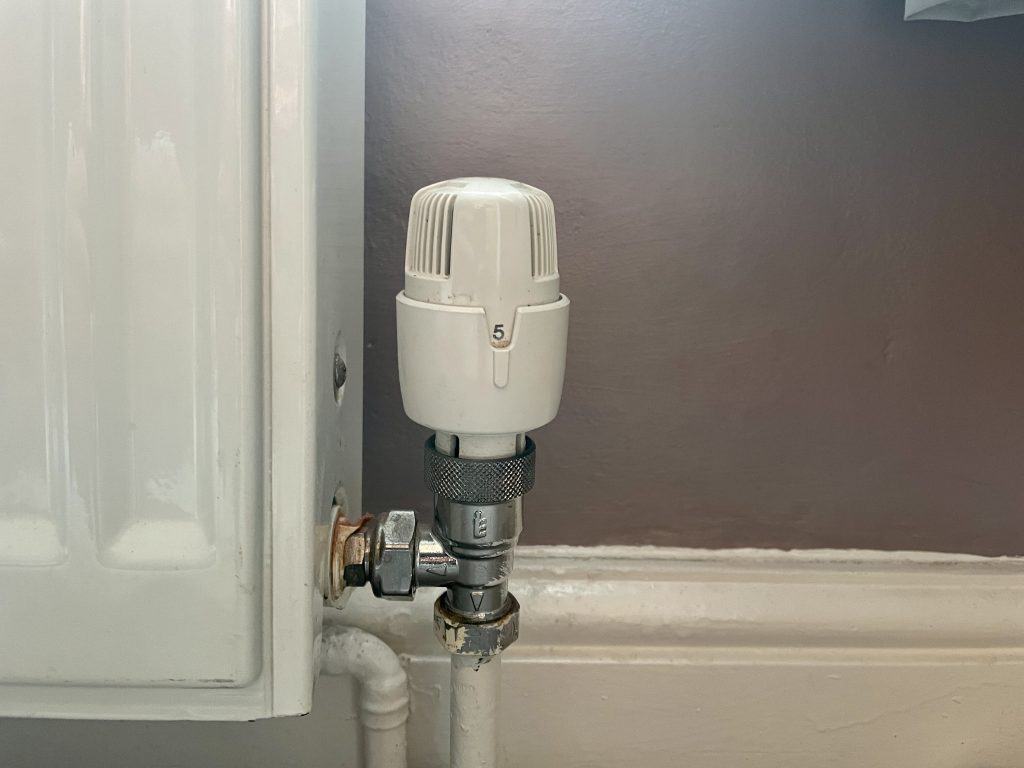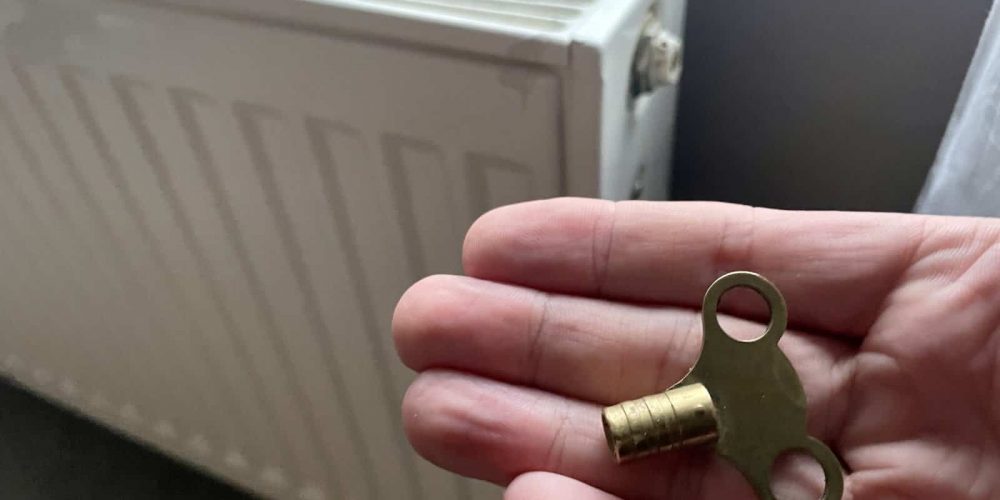As the colder months start approaching in the UK, ensuring your home and family stay warm will be one of your top priorities, along with some strict thermostat management.
Radiator balancing has been my secret weapon for maintaining a consistent temperature in my home and removing any cold spots that may have accumulated during summer.
The difference in warmth throughout my house has been remarkable since I learnt how to balance radiators and applied the process. The balancing process is straightforward, and any handy dad can try it.
Table of Contents
I’ve detailed the steps I took to guide you through the process of radiator balancing. Completing this will drastically improve your home’s radiator efficiency and year-round comfort for you and your family.

What Is Radiator Balancing?
Radiator balancing is adjusting the water flow through each radiator in your home. This ensures that all radiators heat up simultaneously. The aim is to get them heating at the same pace, leading to your heating performing as efficiently as possible.
How To Balance Radiators In 6 Steps
Diving into the step-by-step process of how to balance radiators is the first step in eliminating cold spots around your home. Starting this process is wise, especially before the weather turns chilly. Here’s what you need to do.
Tools You Will Need
- A Radiator bleed key
- A Lockshield valve key
- A Screwdriver
- Digital thermometer or multimeter with a thermometer function
- An Adjustable spanner
Step 1: Turn Off Your Heating
Before you start, ensure that your radiators and heated towel rails are cold. You’ll have to turn off your heating and wait for the radiators to cool down fully.
If you’ve bled your radiators recently, it’s a bonus, as it will make your temperature readings more accurate. Don’t worry if you haven’t, as the balancing process will still be effective.
Step 2: Open All Your Radiator Valves
When your radiators are cold, open all the radiator valves in your house and turn them anti-clockwise.
- Thermostatic Radiator Valve (TRV): This is a manual valve, usually located on one side of the radiator. It allows you to control the temperature of that individual radiator.
- Lockshield Valve: This valve is located on the opposite side of the radiator to the TRV. It controls the hot water that enters the radiator from your boiler.
Thermostatic and wheel head valves are straightforward; turn them by hand. For lockshield valves, first remove the plastic cover. Then, grab an adjustable spanner or a lockshield valve key to turn the valve anti-clockwise and open it up.
Step 3: Turn Your Heating Back On
After opening all the radiator valves, turn on your heating system and watch how quickly each radiator warms up.
Making it a fun activity for the kids can be a great way to check the heating speed of all radiators at once. Usually, the radiators nearest to the boiler will warm up the fastest.
Step 4: Allow Your Heating to Cool Down Again
Remember to switch everything off and give your heating system time to cool down again. It might take some time for the system to completely cool, and it’s often best to let it sit overnight.
Step 5. Adjust the fastest radiator
Turn your heating back on and adjust the quickest heating radiator in your house. Fully close the lockshield valve and open it back up by a quarter turn.
As the radiator warms up, you must measure temperatures using a digital thermometer or a multimeter with a thermometer function.
Start by measuring the temperature on the pipe next to the valve. After that, measure the temperature on the pipe at the other end of the radiator, where the Thermostatic Radiator Valve (TRV) is located. Remember to record both temperatures.
Next, slowly adjust the lockshield valve until there’s a 12°C difference between the two pipe temperatures.
Remember that radiator balancing is a gradual process. Allow the radiator temperature to stabilise after each adjustment to ensure accurate readings.
Step 6: Repeat for Other Radiators
After successfully balancing your first radiator with a precise 12°C difference, it’s time to adjust the slower radiators in the same manner. Address them in the sequence they warmed up.
You’ll notice that the degree to which you need to open the lockshield valve is proportional to the radiator’s distance from the boiler. For the slowest radiators, you may need to open the lockshield valve fully.
By following these steps accurately, you should achieve perfectly balanced radiators. This ensures that the hot water distribution from your boiler is as even to the radiator farthest away as it is to the nearest one.


When Do You Need To Balance Your Radiators?
If the signals below are happening, then it’s time you consider learning how to balance your radiators.
1. Certain rooms become warmer than others upon turning on your heating.
2. Delayed heating in some rooms compared to others.
3. Weird changes in room temperatures.
4. The need to adjust the thermostat considerably higher or lower to achieve desired temperatures.
Why Is Balancing Radiators Important?
Keeping your radiators well-balanced will help prevent certain rooms from becoming too hot. In contrast, others remain cold and merciful to the elements.
Balancing radiators means even heat distribution throughout your home. This ensures your family bathroom isn’t roasting hot while your living room is like the Antarctic.
Balancing Process Vs Bleeding Process
Balancing and bleeding your radiators might seem like the same thing. Still, they actually tackle different central heating issues.
To figure out if you need to balance or bleed a radiator, here’s what you need to consider:
Bleeding your radiator is probably necessary if you notice:
– Rattling, loud noises, or gurgling sounds coming from the system.
– Certain parts of the radiator stay cold, especially at the top.
Remember, you can bleed a single radiator. Still, if you want to balance your heating system, you’ll need to check and adjust every radiator in the house.
Understand Your Heating
Turning on your heating system sends hot water from the boiler throughout your home. This water heats up the radiators or travels to the hot water tank for use in showers and taps.
However, if the radiators are not balanced, the ones nearest to the boiler will heat up nicely, while the one in the third-floor man cave might just become an ice sculpture. To avoid this, balancing your radiators is key to ensure even heat distribution.
Post-Balancing Tips
Once you’ve learnt how to balance radiators, you should notice a more even heat distribution throughout your home. But keep in mind that radiator balancing isn’t just a one-off task. It’s wise to check the balance annually, particularly as winter approaches.
Seeking Professional Help
If you have followed the steps in this guide and still need assistance learning how to balance radiators, it might be time to seek professional help.
A heating engineer can diagnose and repair any problems with your heating, ensuring your home remains warm and comfortable during winter.

How To Balance Radiators FAQ's
Maintaining a minimum temperature of 12 degrees ensures that your central heating system continues functioning correctly, avoiding problems like frozen pipes during the colder months.
This temperature setting allows for the best circulation of hot water throughout the system, resulting in an even spread across all radiators.
While there is no set order for balancing radiators, it is generally recommended to begin with the radiators farthest from the boiler and work towards those closest to it.
This method ensures even heating throughout your home and lets you make fine-tune adjustments as needed.
No, the lockshield valve should not be completely open when balancing radiators. Instead, it should be partially closed to control the flow of hot water into the radiator.
Adjusting the lockshield valve balances heat distribution across all radiators in your home, ensuring continuous warmth without overworking the system.
The number of rotations necessary for the lockshield valve varies according to the radiator’s size and distance from the boiler.
Generally, it begins by gradually shutting the valve by one or two turns. Then, measure the temperature differential between the radiator’s inlet and output pipes. Continue adjusting the valve until the heat output is balanced across all radiators.
Balancing radiators entails changing the flow of hot water to each radiator in your central heating system to guarantee even heat distribution. Switch off the heating system to balance your radiators and let it cool down.
Then, systematically adjust the lockshield valve on each radiator, verifying for constant heat output and fine-tuning as necessary. Finally, test the system to guarantee even heating throughout your home.
Thank You For Reading Our Article On How To Balance Radiators
We hoped you enjoyed our article on how to balance radiators. If you want more essential handy dad content, check out our blog HERE.






